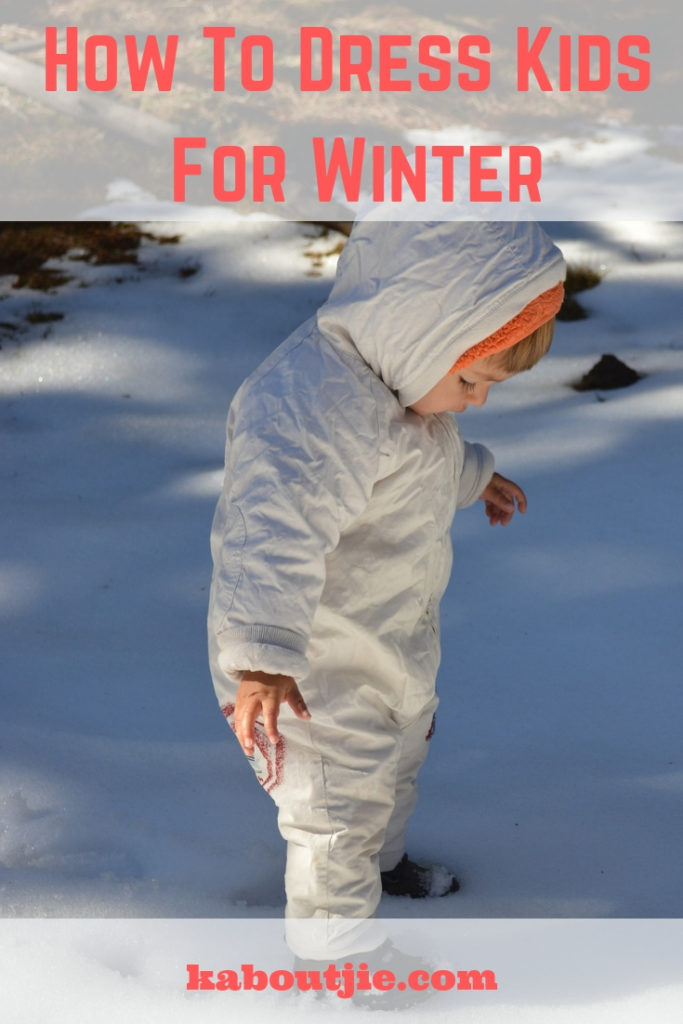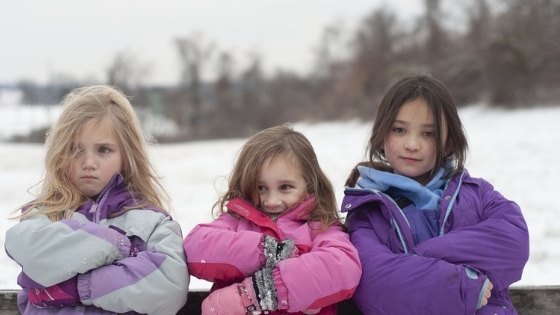Because of their much smaller size, winter clothing is especially important for children. Technically, the reason that your little ones are so susceptible to cold weather is because they have a lot of areas through which to lose heat when compared to their volume. Basically, this means that temperature which seems mildly cool to you can be rather cold to them; if you need a sweater to brave the elements, then they likely need a coat.
With that said, layering appropriately for winter weather is a bit of an art; you don’t want to inundate them with so much clothing that they can’t move effectively! Especially as play time outside approaches. In the following, you’ll see that there are different ways to dress kids of different ages.

1. Winter Layers for Kids of All Ages
Remember: The key is to dress in layers without the attendant bulk that comes from doing it incorrectly. After all, you want your kids to have the range of motion required to move freely and have fun during playtime. With this in mind, the three-layer system is in effect:
- First of all, put on a base layer; this is important for minimizing the effect of sweat and helps keep your kids dry. The material here is important; eschew cotton in favor of polyester or even a wool-blend.
- Next, you need an insulating layer to seal in the heat produced by their bodies; usually, a sweater comprised of wool does the trick – or even a non-cotton fleece jacket.
- Lastly, the shell layer should be both waterproof and wind-resistant.
For extra savings, consider purchasing winter clothes for kids a year ahead. Clothing goes on sale in December, particularly after Christmas.
2. Winter Bundling for Infants (Kids Under 1 Year Old)
Although it might be tempting to layer them to the same degree that you do yourself or older kids, this isn’t necessary – infants simply don’t do much work. At this age, they simply need to be kept warm; which means that they should be bundled up in a breathable material that isn’t wrapped too tightly.
Additionally, in inclement weather, make sure to have some windproof covering for the infant. Even if it’s not especially windy, the winter months can have the weather creep up on you innocuously, and you can be certain that your child is cold if you feel it even a little bit. Bundle the infant securely, and make sure the material you use is breathable even as it protects them from the snow, wind or rain.

3. Dressing Toddlers for the Cold (Age Range: 1 – 3)
Unlike infants, toddlers are in their walking stage, which makes bundling as a means of maintaining warmth more difficult (potentially). These burgeoning little pistons of energy will require range of motion, so as not to hamper their newfound ability to crawl, tumble, and sometimes even walk. By dressing them too tightly, you’ll see the frustration in their movements; as such, opt for several light layers of clothing instead of bulky items. That means there shouldn’t be any single large coats that hamper their movements! They’re not yet kids, so you needn’t worry too much about excess activity – but rest assured, that is on the way in just a few short months or years.
4. Children Age 4 – 10 Years
In this age range, things get a bit tricky when it comes to winter layering. Children tend to be quite active now, having mastered the abilities to walk and run; as such, they will exert themselves and be more susceptible to sweating. You have to dress them up enough so that, although they will heat up, they will not sweat. If the latter happens, then it’s time to remove their layers right away so as to avoid the inevitable chill that comes with cooling down once the vigorous activity subsides.
A side note: when layering them at this age, it’s imperative that they are able to take their clothing off easily and quickly when they need to use the bathroom. Kids will be kids, and they will more readily have an accident if taking off all those layers is time-consuming.
5. 11 Years Old and Above
The final long stage before young adulthood should introduce your children how to dress like adults. After all, they should have started getting to normal human size by now! You can layer them pretty much like you layer yourself for the winter, as they will tend to build up as much sweat (maybe a little more, actually) as the more vigorous version of you would. Synthetic apparel is more favorable than cotton at this stage because of this – especially if they plan on indulging in activities such as hiking or cross-country running. Stay warm this winter – but more importantly, make sure the next generation is dressed for the weather.
 Kaboutjie SA Mommy Blogs by Lynne Huysamen
Kaboutjie SA Mommy Blogs by Lynne Huysamen




